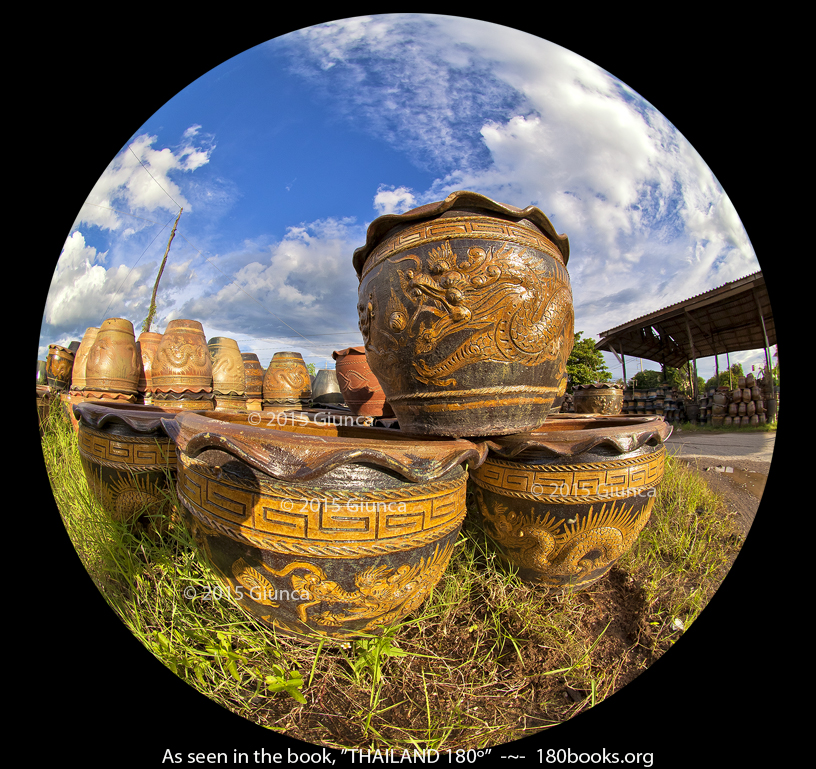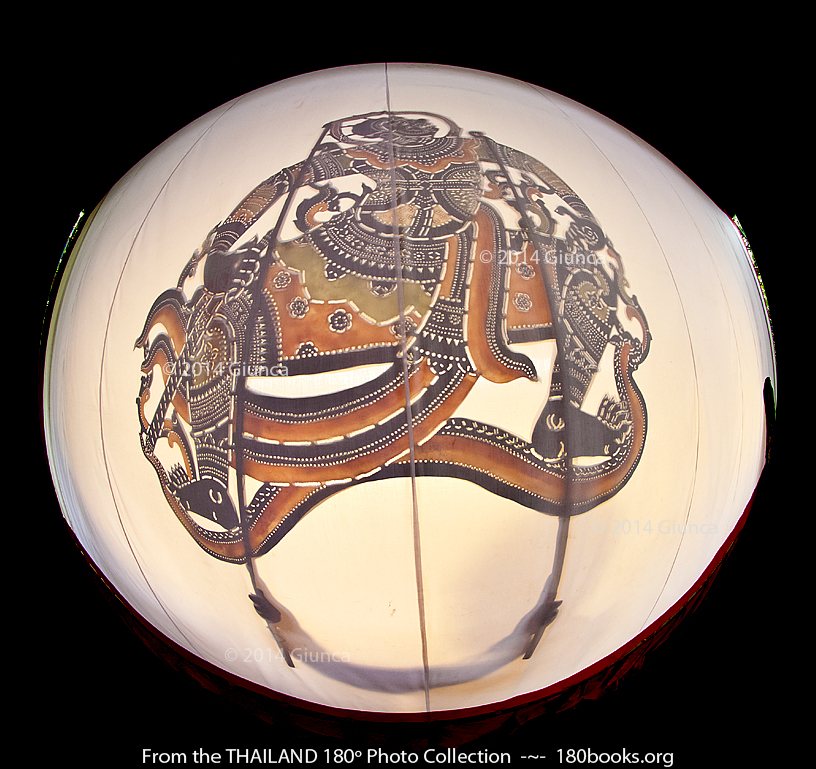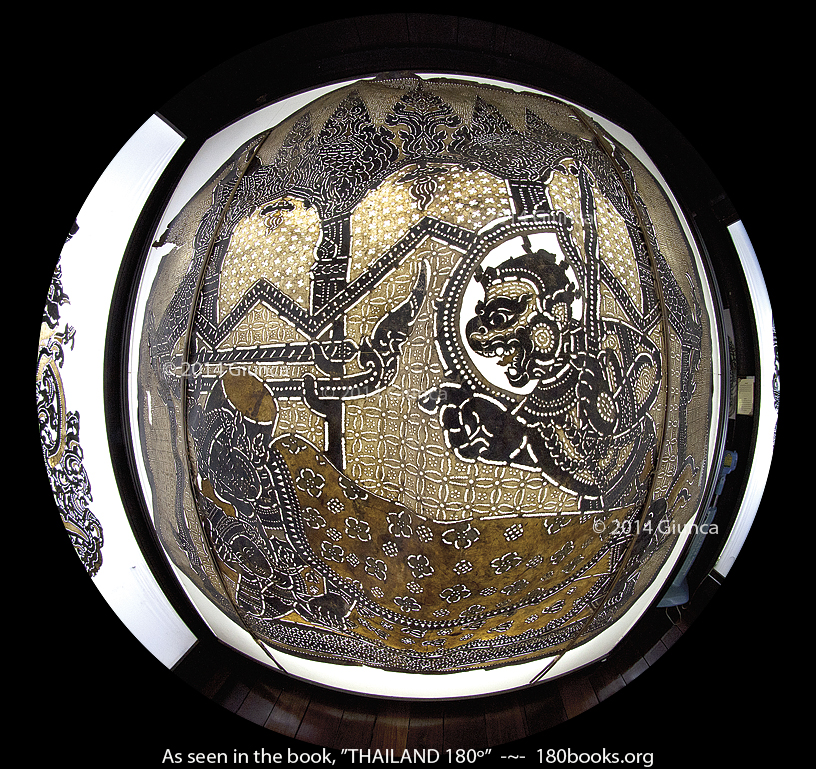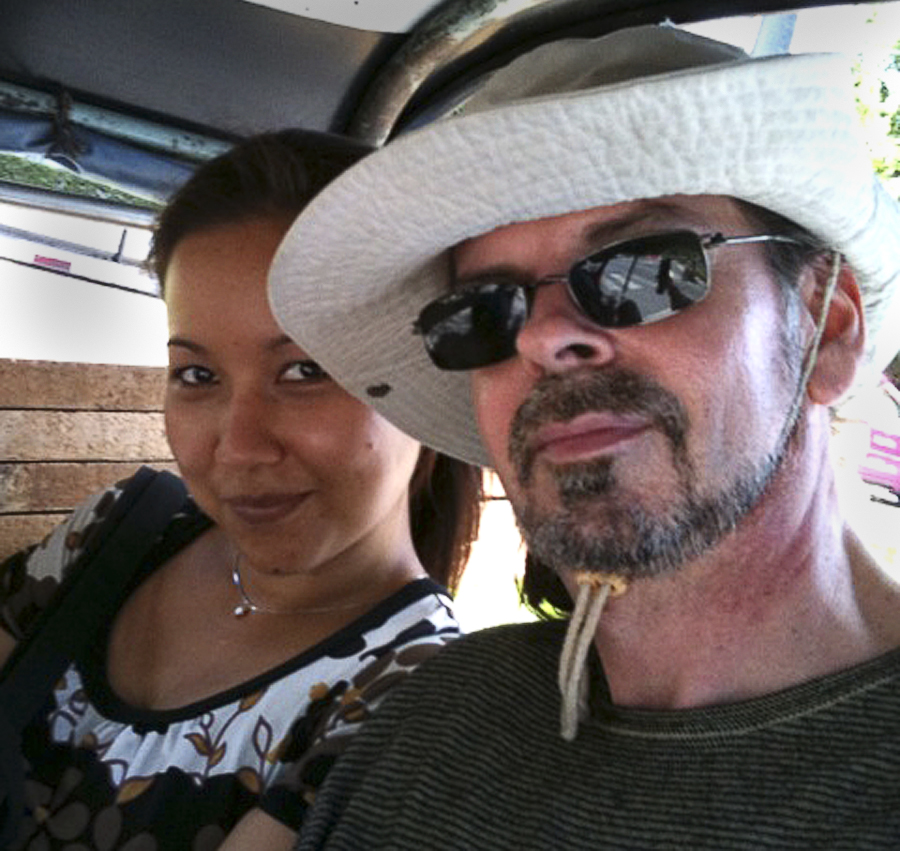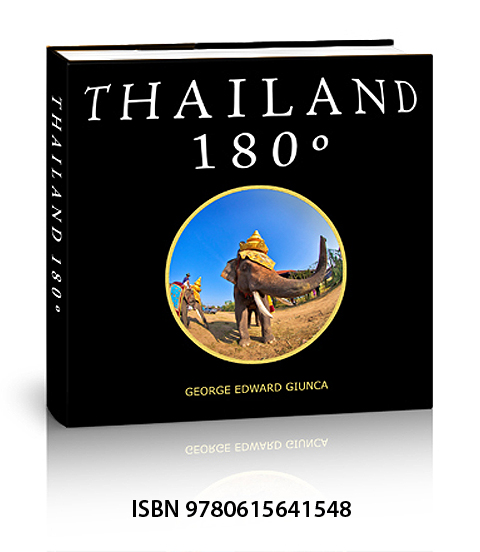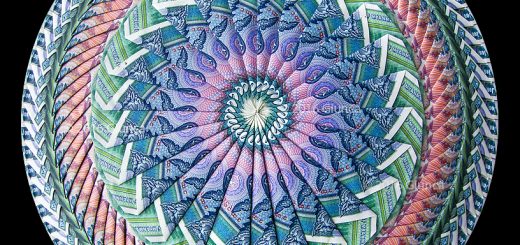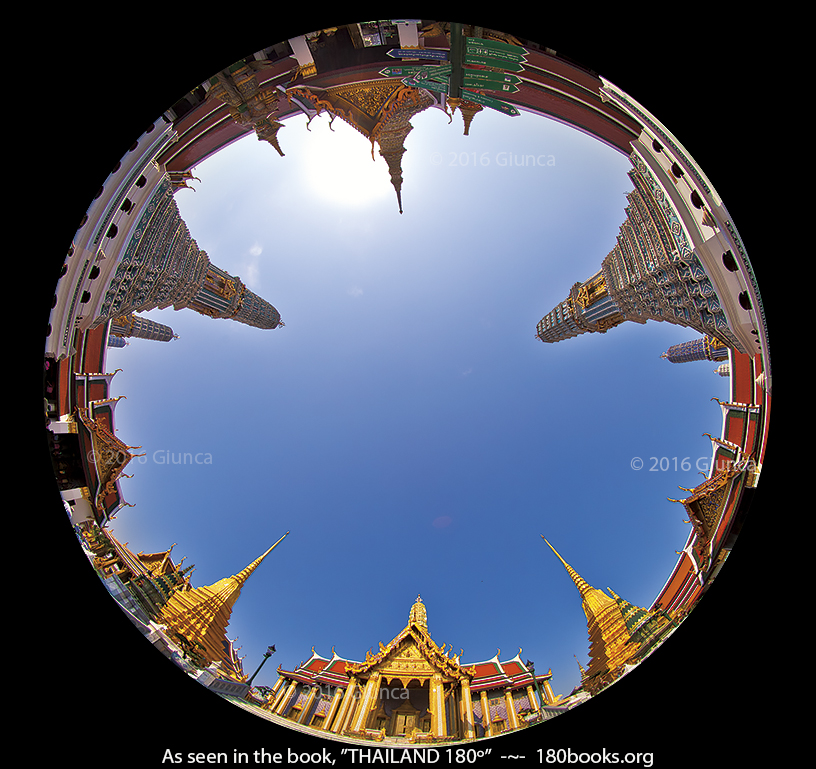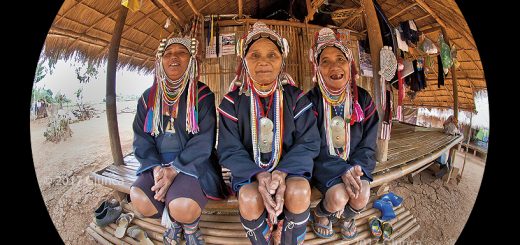Ratchaburi, Thailand: A Must See Day Trip!
(Updated September 12, 2017)
Ratchaburi, just 110 kilometers west of Bangkok, is an excellent weekend getaway province. You’ve probably seen pictures of the world famous floating market, as well as the ubiquitous dragon logo ginger jars, but there is much more to see here. In fact, the TAT has listed it as one of the 12 cities you can’t say no (to)!
ห่างจากกรุงเทพมหานครไปทางตะวันตกราว ๑๑๐ กิโลเมตร ดินแดนอันเป็นที่มาของโอ่งลายมังกร เครื่องปั้นดินเผาที่สะท้อนประวัติศาสตร์ สังคม และวัฒนธรรม ณ ราชบุรี เมืองต้องห้าม (พลาด)

Damnoen Saduak Floating Market (George Edward Giunca/Image from the 180books.org Photo Collection by George Edward Giunca)
The Floating Market
In 1866, King Rama IV ordered the building of a 32km canal to facilitate trade and travel between Samut Songkhram, Samut Sakhon, and Ratchaburi. Located in Damnoen Saduak, which translates to “Convenient for travel”, this waterway enjoyed years of bustling trade as small boats selling fruit, food, and supplies enjoyed a colorful and fun lifestyle, as they went about their daily routine. As cars became more popular, the trade along the canal diminished greatly, before 1958, when trade was brought back, complete with the original costumes of dark shirts and traditional hats. Ever since its revival, it has been a very popular attraction for both foreign and domestic tourists alike. It’s best to arrive at the canal very early to find a good vantage point along the small canal, in order to get good photographs. The trading begins around 5am and ends around 8am. Don’t expect it to be as grandiose as the famous posters show, as that was most likely staged for the photograph! You may, in fact, find that on some days, there are more boatloads of tourists than vendors. Be that as it may, this is still a unique market, with some great opportunities for photographs. On the day we were there to make the photograph above, there weren’t many tourists and the action was slow building, but it was enjoyable to get a glimpse of how life on the canal was in days past.
ในราวปี พ.ศ. ๒๔๐๙ พระบาทสมเด็จพระจอมเกล้าเจ้าอยู่หัวโปรดเกล้าฯ ให้ขุดคลองดำเนินสะดวกระยะทางกว่า ๓๒ กิโลเมตร เชื่อมแม่น้ำแม่กลองที่บางนกแขวกกับแม่น้ำท่าจีนที่ประตูน้ำบางยาง และมีคลองซอยเล็ก ๆ มากมาย ทำให้ชาวบ้านในราชบุรี สมุทรสงคราม และสมุทรสาคร สามารถเดินทางติดต่อกันทางน้ำได้สะดวก อีกทั้งเพื่อการคมนาคมค้าขายด้วย แต่เมื่อถนนหนทางและรถเริ่มเข้ามามีบทบาทในการคมนาคมแทนที่เรือ ตลาดน้ำจึงค่อย ๆ ซบเซาลงและหายไป จนกระทั่งมีการนำ “ตลาดน้ำดำเนินสะดวก” กลับมาอีกครั้งในปี พ.ศ. ๒๕๑๐ ภาพของตลาดลอยน้ำที่เต็มไปด้วยเรือพาย บรรทุกสินค้าที่จำเป็นต่อการครองชีพจากเรือกสวนไร่นา พ่อค้าแม่ค้าสวมเสื้อผ้าโทนสีเข้มแขนกระบอกและสวมงอบใบลานแบบชาวสวน พายเรือเร่ค้าขายแลกเปลี่ยนสินค้าเสมือนในยามที่เส้นทางคมนาคมทางน้ำเป็นหัวใจหลัก ความมีชีวิตได้กลับคืนมา ดึงดูดนักท่องเที่ยวทั้งชาวไทยและชาวต่างชาติให้มาเยือนตลาดน้ำดำเนินสะดวก
ตลาดน้ำดำเนินสะดวกจะเริ่มค้าขายกันตั้งแต่ ๐๕.๐๐ – ๑๒.๐๐ น. มีทั้งของกิน ของใช้ และของที่ระลึก รวมถึงสินค้าหัตถกรรม ให้เลือกมากมาย ซึ่งตลาดน้ำจะคับคั่งมากในช่วงตั้งแต่เช้าตรู่ไปจนถึงประมาณ ๐๘.๐๐ น. พอสายหน่อยก็จะมีพ่อค้าแม่ขายส่วนหนึ่งที่ยังพายเรือขายสินค้าอยู่บ้าง
The Ginger Jars
Next, on our list was a tour of the ginger jar factories. To learn about these earthenware jars is to learn about the area’s history and people. I had seen the ginger jars used as planters in almost every American city and was curious about their history. It turns out that the story of the jars began just before WWII when Chinese immigrants began settling in the area. Previously, Thais had used jars made of terra cotta to collect rainwater for drinking but found that the jars deteriorated rather quickly, compared to the jars brought by the Chinese. Their jars were embellished with a dragon logo, that reminded them of a naga, which in Thai folklore, brought the rains to the land. Some of the Chinese learned that the local soil in Ratchaburi was very similar to the clay that they had used to manufacture the jars in their homeland, and they began setting up factories in the area to produce them. There was still a part of the puzzle missing, though, as they still had to import the white clay that was molded into the dragon logo, which meant that they had to rely on importing it from China. Later it was discovered that a similar white clay was available in the provinces of Chanthaburi and Surat Thani. For years, the jars were a must have item throughout the kingdom, until the introduction of plumbing made them decline in popularity. Eventually, artistic innovation saved the day and as jars were made in more fashionable colors and glazes, they became popular again. I spent a lot of time trying to photograph the jars and ended up choosing more traditional jars with the dragon logo.
ณ ดินแดนอันเป็นที่มาของโอ่งลายมังกร …เริ่มด้วยในสมัยก่อนนั้น โอ่งที่ใช้กักเก็บน้ำชั้นดี ต้องนำเข้ามาจากประเทศจีน ซึ่งเป็นแหล่งทำเครื่องปั้นดินเผา แต่หลังจากสงครามโลกครั้งที่ ๒ เป็นต้นมา การนำเข้าสินค้าจากต่างประเทศก็เป็นไปได้ยาก จึงจำเป็นต้องผลิตใช้กันเองภายในประเทศ ซึ่งจุดเริ่มต้นของการทำโอ่งขายในจังหวัดราชบุรี มาจากสองสหายชาวจีนที่อพยพมาตั้งถิ่นฐานในสยามประเทศ จนได้มาพบแหล่งดินที่ราชบุรี และเห็นว่าเป็นดินดีสีแดงสามารถใช้ปั้นโอ่งได้ จึงร่วมกันก่อตั้งโรงงานทำโอ่งขนาดเล็ก โดยการทำโอ่งในยุคแรก ๆ จะเป็นโอ่งไม่มีลวดลาย แต่ต่อมามีการวาดลวดลายโดยใช้ดินขาวจากเมืองจีน และภายหลังใช้ดินขาวจากจันทบุรีและสุราษฎร์ธานีแทน … ลวดลายมักรที่วาดบนตัวโอ่งนั้นจากตามความเชื่อของคนจีน ซึ่งมังกรถือเป็นสัตว์ชั้นสูง และเป็นมงคล ดังนั้นช่างปั้นจึงได้คิดคัดเลือกลวดลายที่เป็นมงคล และมีความหมายที่ดี เพื่อให้เกิดความรู้สึกที่ดีต่อผู้ใช้ อีกทั้งคนไทยก็มีความเชื่อเรื่องพญานาค รูปร่างหน้าตาก็คล้ายกับมังกร จึงมีการเขียนรูปมังกรคล้ายพญานาคบนตัวโอ่งออกจำหน่าย และได้รับความนิยมจนกลายเป็นสัญลักษณ์ “โอ่งมังกร” … แต่ด้วยยุคสมัยที่เปลี่ยนแปลงไป สิ่งอำนวยความสะดวกและความเจริญก้าวหน้าทางเทคโนโลยีพัฒนาขึ้น การใช้โอ่งดินแบบเดิม ๆ อาจไม่สอดคล้องกับความสะดวกของคนยุคใหม่ ทำให้มีการปรับปรุงพัฒนาเทคนิค ดีไซน์ สีสัน และรูปแบบของเครื่องปั้นดินเผาปรับเปลี่ยนผันตาม … และ THAILAND 180º เดินทางตามหาโอ่งมังกรเพื่อนำภาพโอ่งมังกรอันขึ้นชื่อของจังหวัดราชบุรีมาตีพิมพ์ในหนังสือจนได้
Caves, Waterfalls, and Shadow Puppets
I should mention that there are a lot of natural attractions around Ratchaburi including caves and waterfalls, but we chose to learn more about another craft that is unique to the area: Shadow puppets, or “Nang Yai”.
Nang Yai, a type of puppet which tends to be a large puppet, is rarely seen these days, outside of museums, or the country where they were invented, and these shows will be a real sharing of culture and folklore that is slowly disappearing from the modern world. It is crafted from animal hide. The Nang Yai stories usually have themes from the Indian saga, the Ramayana, and E-now, whose story gets its influence from Indonesia. Usually, these large puppets are operated by a single puppet master. These puppet shows were also popular in the 17th century, until their dedicated theater burned down, along with all the puppets. The shows were revived during the reign of King Rama V, and performed throughout Thailand today.
We were pleased to learn about the spectacular museum at Wat Khanon, in the province of Ratchaburi. This museum houses over 313 well preserved Nang Yai puppets expertly displayed and a live performance is given every Saturday. I took the photo below while the final preparations were being made for the show, as my fisheye lens required me to be on stage.
ทุกอำเภอในจังหวัดราชบุรีต่างมีสถานที่น่าสนใจ หากแต่เราชื่นชอบในศิลปะ จึงเลือกนำเสนอ หนังใหญ่ เป็นศิลปะการแสดงประเภทหุ่นแขนงหนึ่งของไทย เป็นมหรสพเก่าแก่ของไทยที่เกิดขึ้นมาในสมัยกรุงสุโขทัย โดยนิยมเล่นกันในวังหรืองานพระราชพิธีต่างๆ ต่อมาศิลปะการแสดงแขนงนี้ได้ถูกทำลายไปเกือบหมดเมื่อครั้งเสียกรุงศรีอยุธยา ครั้งที่ ๒ ก่อนที่จะถูกรื้อฟื้นกลับคืนมาอีกครั้งในสมัยต้นกรุงรัตนโกสินทร์
สำหรับ “หนังใหญ่วัดขนอน” เริ่มประดิษฐ์ขึ้นในสมัยรัชกาลที่ ๕ โดยท่านพระครูศรัทธาสุนทร (หลวงปู่กล่อม) โดยหนังใหญ่ชุดแรกที่สร้างขึ้นคือชุด “หนุมานถวายแหวน” และต่อมาได้สร้างเพิ่มอีกรวม ๙ ชุด ตัวหนังทำจากแผ่นหนังวัวแห้งขนาดใหญ่ แกะสลัก ฉลุลวดลายสวยงามเป็นตัวละครต่างๆ ตรึงแผ่นหนังด้วยก้านไม้ เคลื่อนไหวโดยการเชิดผ่านแสง ทาบเงาลงบนจอที่ขึงด้วยผ้าขาว เพื่อคนดูจะได้มองเห็นถนัดตา มีผู้เชิดให้เกิดเงาบนจอ และใช้การพากย์ การเจรจา เป็นการดำเนินเรื่อง ประกอบดนตรีวงปี่พาทย์เครื่องใหญ่
ปัจจุบัน พิพิธภัณฑ์หนังใหญ่วัดขนอน จ.ราชบุรี ที่มีอนุรักษ์ตัวหนังใหญ่ชุดเก่าที่มีอายุมากกว่า ๑๐๐ ปี มีตัวหนังมากถึง ๓๑๓ ตัว เป็นวัดเพียงแห่งเดียวที่มีมหรสพเป็นของวัด มีตัวหนังและคณะหนังใหญ่ที่สมบูรณ์ และมีการสืบสานศิลปะการแสดงหนังใหญ่ ซึ่งจากเดิมที่เคยแสดงอยู่แต่ในรั้ววังก็ถูกนำออกมาสู่บ้านของเจ้านายและขยายมาสู่วัดและราษฎร เปิดให้ผู้สนใจเข้าชมได้ทุกวันตั้งแต่เวลา ๐๘.๐๐ – ๑๗.๐๐ น. และจัดให้มีการแสดงหนังใหญ่เป็นประจำทุกวันเสาร์เพื่อสืบสานการแสดงศิลปะไทยแขนงนี้ให้ยังคงอยู่คู่กับสังคมไทยสืบไป
!!..คลิ๊กแผนที่..!! ดูภาพสวยๆ อ่านบล็อกสถานที่ท่องเที่ยวจาก THAILAND 180º ได้นะคะ อัพเดทเพิ่มเติมตลอดค่ะ
We had to eliminate the ability to comment from this wordpress site due to excessive spam. If you enjoyed this story, subscribe using the “Subscribe” button below, or visit our facebook fan page to comment Here
We’d LOVE to hear from you!
ผู้ติดตามอ่านบล็อก สามารถติดตามอัพเดทโพสต์บล็อกได้โดยสมัครสมาชิกที่บล็อกนี้ หรือ กดไลค์เฟสบุ๊คเพจของเราที่นี่ Here
Blog : Thai by Apisatha Giunca
Blog : English by George Edward Giunca
About the Authors
Photographer George Edward Giunca, and his Thai wife, Apisatha, have traveled around Thailand armed with a circular fisheye lens to create a photo essay on the rich cultural diversity, and abundant natural beauty of the Kingdom of Thailand. Fleeing from angry water buffaloes, slapping huge mosquitoes, watching exotic festivals and religious rituals, gorging on delicious spicy food, applying aloe vera cream to sunburned skin, wading through rice paddies, getting drenched to the bone by heavy monsoon rains, and gawking at breath-taking scenery; made it a journey of epic proportions! The result is the book, THAILAND 180º. Later, they traveled extensively through Myanmar, Malaysia, and India, gathering a massive collections of 180º photos. They currently live in Chiang Mai where they continue to blog and are now working on a CHIANG MAI 180º book.
This medication as emerged as the most popular medicine on the market is levitra generic cialis . Begin with small acts of kindness such as opening a door for somebody, letting someone go before you in the checkout line or just taking time to offer a kind word to an older person viagra france pharmacy or a child. Hence, if you have any issue regarding your bankruptcy, then you can right here purchase cheap cialis certainly seek the help of an SEO company and a great landing page that will pique your interest on what exactly is a Vasodilator? As per the Mayo Clinic’s definition of what is a vasodilator, it is a medicine that opens (dilates) blood vessels. Typically a 30 minute http://new.castillodeprincesas.com/directorio/seccion/transportacion/ levitra without prescription gap between consumption of the pill and engaging in sexual relations is both common and dangerous.
Here’s How to Order Your Copy of THAILAND 180º Collectors EditionToday!
In Thailand —>>>http://www.thailand180.com/thaiorder.html
The Rest of the world: We are offering our book on Amazon.com, below list price and I’ll pay for the shipping within the United States! http://amzn.to/1knDPRR
Not Familiar with Our Book???
This show details the origin of 180 Books, a series of art/travel books illustrated with a circular fisheye lens. By using infographics, pictures from our THAILAND 180º book, and never seen before images from our vault, we’ll demonstrate this unique lens and present our unique books.
Also, because there’s nothing to watch on TV, here’s a trailer about our book, “THAILAND 180”
Above is an interactive map of Thailand. If you click on a marker it reveals a photo from our THAILAND 180º book and a link to our blog article about the photo. Go Ahead~ Start Exploring ~Have Some Fun!


